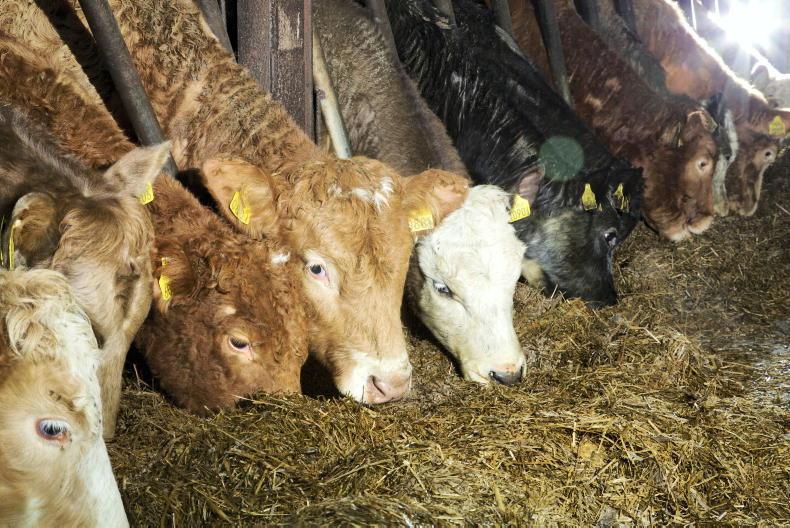The grazing year of 2023 will go down as being a tricky one in most parts of the country. Difficult grazing conditions in wetter parts of the country mean a lot of cattle have been housed over the last two weeks. This is a month earlier than normal on some farms.
While there may be an opportunity to get weanlings back out again for many farms with suckler cows that are now housed, the likelihood is that they won’t get back out. This has implications for fodder supplies.
A suckler cow will eat about 1.5 round bales a month, so on a farm with 20 cows, housing a month early means an extra 30 bales will be required above what’s normally required.
In a normal year, most farms would probably have made this extra but with second cut missed on some farms, fodder could be tight.
Straw is also in short supply with some farmers having to look at alternatives for bedding and feed any straw they have for the upcoming winter.
The only positive when it comes to feeding this winter is that concentrates have came back in price and are likely to come back more in the coming weeks. This means that where fodder is scarce meal feeding levels can be raised. This will especially work well in finishing systems or with weanlings where meal feeding is important to make sure weight gains are hitting targets.
Speaking to some farmers around the country, beef animals are coming into the autumn four to six weeks behind where they should be, so meal feeding will be important to pick up this slack in the coming weeks.
With grass still plentiful on cattle farms and animals housed, some farmers will look to grazing and finishing lambs as a means to using up the surplus grass.
Darren Carty crunches the figures where he looks at the budgets on buying lambs.
The grazing year of 2023 will go down as being a tricky one in most parts of the country. Difficult grazing conditions in wetter parts of the country mean a lot of cattle have been housed over the last two weeks. This is a month earlier than normal on some farms.
While there may be an opportunity to get weanlings back out again for many farms with suckler cows that are now housed, the likelihood is that they won’t get back out. This has implications for fodder supplies.
A suckler cow will eat about 1.5 round bales a month, so on a farm with 20 cows, housing a month early means an extra 30 bales will be required above what’s normally required.
In a normal year, most farms would probably have made this extra but with second cut missed on some farms, fodder could be tight.
Straw is also in short supply with some farmers having to look at alternatives for bedding and feed any straw they have for the upcoming winter.
The only positive when it comes to feeding this winter is that concentrates have came back in price and are likely to come back more in the coming weeks. This means that where fodder is scarce meal feeding levels can be raised. This will especially work well in finishing systems or with weanlings where meal feeding is important to make sure weight gains are hitting targets.
Speaking to some farmers around the country, beef animals are coming into the autumn four to six weeks behind where they should be, so meal feeding will be important to pick up this slack in the coming weeks.
With grass still plentiful on cattle farms and animals housed, some farmers will look to grazing and finishing lambs as a means to using up the surplus grass.
Darren Carty crunches the figures where he looks at the budgets on buying lambs.










SHARING OPTIONS